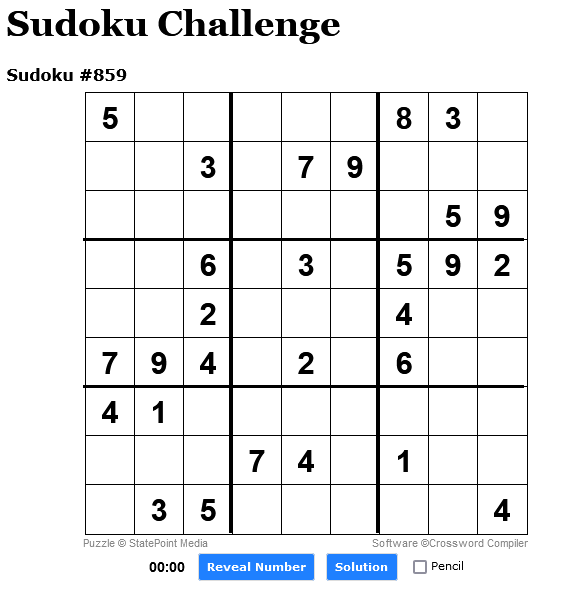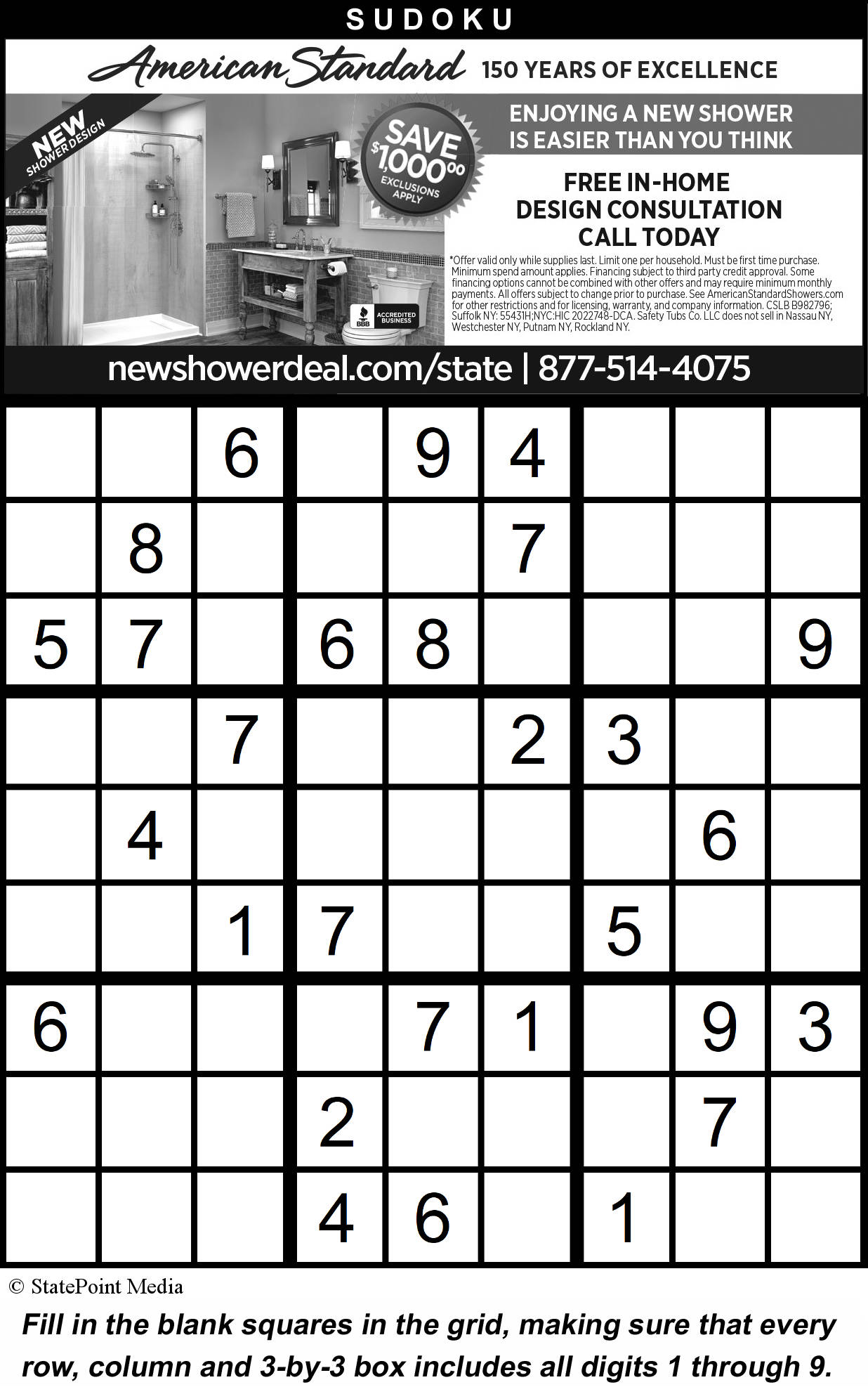Sudoku is back on oursentinel.com
This week, The Sentinel is happy to bring back the Sudoku Challenge. Back in 2004, the Times in London helped spread Sudoku to Western culture by publishing it first daily. Since then, people attempt to solve one of the possible 5,472,730,538 puzzles.
Your objective, if you haven't played this game before is to fill each row and column with the same number only once using digits 1 through 9. Sudoku is also awesome, fun for developing concentration and keeping your brain sharp.
Our new reboot allows Sentinel readers to solve the puzzle online. After you solve this weeks, try one or more of the additional Sudoku puzzles to play.
Here's how you play:
Click on any box in the puzzle and the frame will turn yellow. When you do this the clock starts ticking. Use your keyboard to place the numbers in each box. Remember the goal is to only use one number in each row and column. If the number you wish to use is already present in the row or column, you will not be able to insert it into that box.
Below the puzzle, you will see a check box that says pencil. Use this to "pencil in" answers. Penciled numbers will be in blue. When you are ready to fill in a box simply uncheck the box and fill it with the correct number.
Two other tips: You can erase numbers by highlighting them and clicking delete on your keyboard. Also, you can use the "Reveal Number" button to show you the correct number for the highlighted square - but don't use it too often. It takes the fun out of solving the puzzle.
When you have filled in all the squares a congratulatory message will pop up. If you have filled in all the blanks but see the pop-up, it means you did something wrong. Click the "Solution" button to see where you might have failed.
Good luck and test your brain each week.
Sudoku | March 11, 2021
While the name is obviously Japanese in origin, Sudoku puzzles were created by a Swiss mathematician in the 18th Century. The logic-based puzzle was first called "Latin Squares". In 1895, a French newspaper published what is considered to be closest and earliest predecessor to modern Sudoku. Nearly one hundred years later, sometime in 1984, the puzzles were introduced in Japan and their rise to a world-wide phenomenon began.
Click on the puzzle below and save it to your computer. Print and complete as you have time. It's good for your brain!
Here is the solution to last week's puzzle:
Here is the solution to last week's puzzle:
Sudoku Challenge | March 4, 2021
According to the work of cognitive scientist Jeremy Grabbe, solving Sudoku puzzles uses mental processes in what is known as working memory. Experiment by Grabbe showed that routine Sudoku playing could improve working memory in older people.
In another study on short-term memory, which involved 19,000 individuals, puzzle takers over the age of 50 had better brain function and appeared to operate at a level eight years younger than typical for their chronological age.
Click on the puzzle to open a large printable version. Save it to your computer and print. The puzzle solution will be published here a week from today. To help your brain stay sharp as a whip, visit The Sentinel for a new puzzle every week.
Subscribe to:
Posts (Atom)
More Sentinel Stories

PONTIAC - People everywhere are conquering their cabin fever and are enjoying the great outdoors after a long, bitter winter. But before you head out for that hike, health care experts remind you to take precautions to avoid tick bites. Read more . . .

CHICAGO - An Illinois law professor is weighing in on what she called a "very public and open test of due process" for immigrants being deported from the United States without court hearings. Read more . . .

CHAMPAIGN - In a show of solidarity against President Donald Trump's trade and immigration policies, which critics say are harming families and retirement savings, more than a thousand protesters gathered Saturday at West Park near downtown Champaign for the Hands-Off! Mobilization rally. Read more . . .
Photo Galleries

A couple of runners found themselves in the wrong race at this year's Illinois Marathon. Over 60 photos from the race that you should see.
Photos: Sentinel/Clark Brooks




